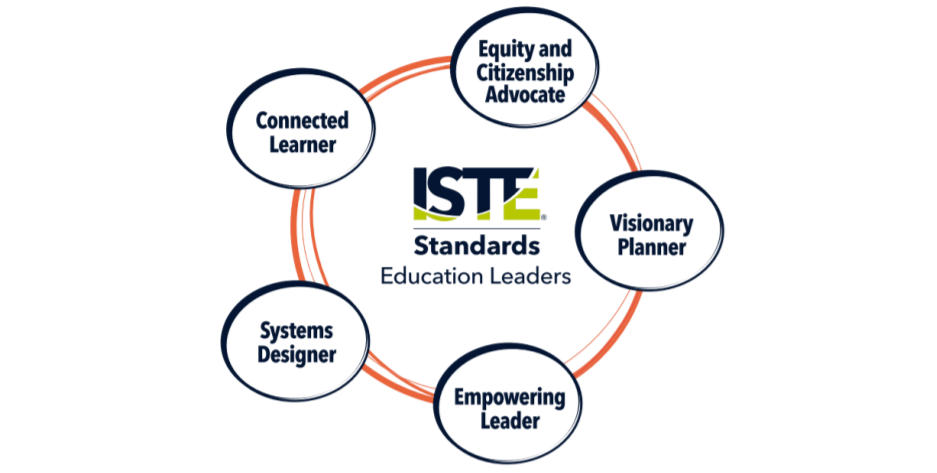The education leaders section of the ISTE standards focuses on equity, digital citizenship and visioneering as well as team and systems building, continuous improvement and professional growth. This is aligned with learning models like technological pedagogical content knowledge (TPACK).
Administrators who adhere to this standard create a culture of education that’s consistent and supportive of technology. This includes ensuring that all teachers have access to the tools they need.
1. Visionary Leader
A visionary leader is someone who has a clear idea of what they want to achieve. They’re able to motivate and inspire those around them to work towards their goals. They’re also incredibly focused and have a knack for keeping their team members on track.
Education leaders who have the visionary leader role help their colleagues embrace new technologies. They create a culture that allows students and teachers to use technology in innovative ways to enrich learning environments. They also empower educators to exercise professional agency and pursue personalized learning opportunities.
Visionary leaders are also empathetic and understand the power of technology to help people, whether it’s for good or evil. They teach their students to act responsibly online, promoting empathy and the safe, ethical and legal use of digital tools.
Computer science educators who have the visionary leader standard ensure all students are able to participate in their subject matter by ensuring access to relevant and effective digital tools. They also keep pace with the rapid development of technology in their field, inspiring their students to be lifelong learners.
2. Empowering Leader
The ISTE Educator Standards provide a roadmap for educators to take empowered learning with technology from vision to practice. They focus on some of the most important, yet enduring topics in education including equity and digital citizenship. The standards also include teacher leadership, visioneering, team and systems building as well as curriculum design.
Education leaders must foster an environment where teachers can exercise teacher leadership by taking charge of their own learning. They encourage and inspire educators to explore new technologies, experiment with different classroom activities, and build their own personalized professional development.
Lastly, education leaders must ensure students have a voice in their learning. This means allowing students to set their own learning goals and customize their learning environments, as well as providing feedback on their progress. It’s also essential that students learn how to curate and evaluate information they encounter online. This helps them understand that the vast amount of misinformation that is spread daily can have serious consequences if they don’t act responsibly online. Students should also be able to develop and use their empathy skills in order to better connect with others.
3. Systems Designer
ISTE’s standards for educators address important, yet enduring topics like visioneering, team and systems building, continuous improvement and professional growth. They also emphasize key skills like equity, digital citizenship and the ability to contextualize information online.
A teacher who is ISTE compliant teaches students to be global collaborators and demonstrates the power of digital tools to express themselves creatively. ISTE standards also require teachers to teach computational thinking, which helps students understand how the modern world works and what’s at stake when it comes to privacy, data mining and hacking.
Finally, ISTE standards require teachers to help students become good citizens by teaching them the values and ethics that go along with using technology in a safe, legal and ethical manner. It’s important that students understand the intricacies of the online world and how their personal information is used, which is why the ISTE Computational Thinking Standard was developed to help schools meet these requirements. This also helps students develop empathy as they learn to think about how their actions affect others, both in the real and virtual worlds.
4. Connected Learner
To fulfill this tenet, an education leader must be a creative communicator with other educators and students. This means they collaborate with others, exchange ideas and work to solve problems both online and offline. It also implies that they’re a learner themselves, keeping up with emerging trends in their fields. They must actively pursue professional goals, stay up-to-date with educational technology research and engage in ongoing learning to enhance their own coaching.
This final standard is probably the most critical of them all. It calls for an ISTE-compliant coach to regularly inspire students to act responsibly in the world of digital tools and media. It also demands that they build and develop empathy for other people in their lives, both in real life and in virtual spaces.
These four standards cover a lot of ground and are focused on some of the most important issues in education today. They make teachers more tech-conscious and savvy, help students become empowered learners and offer a framework for guiding digital age learning. To learn more about them, watch this fun music video from ISTE.
5. Digital Citizenship
Teaching students to be digital citizens is a crucial component of education in the 21st century. Educators must help their students navigate the digital world with empathy and kindness. There are many resources available on the topic, including curriculum from Common Sense Media and digital citizenship lessons from Ribble.
However, most of these materials and lessons focus on what students should not do online. For example, they often encourage students to avoid sharing personal information and to be careful when browsing age-appropriate websites.
These kinds of lessons are important, but they should be accompanied by ones that teach students to use technology as an effective learning tool. For example, a teacher could assign students to investigate the issue of homelessness and compare how it is represented in various media, such as mainstream news stories, social media posts and advocacy-group videos.
This kind of learning helps students understand that the Internet is filled with a lot of information and it’s difficult to keep up with current events using traditional methods alone. It also helps them recognize that they can leave a digital footprint behind that can be used against them in the future, for example, when applying to college or seeking employment.


Importance of Fruits and Vegetables in Human Diet
Fruits and vegetables are important sources of micronutrients including vitamin C, vitamin A, thiamine, niacin, folate, minerals and dietary fibre. They can also provide antioxidants. Aiming for nine total servings of fruits and veggies per day might seem unrealistic, but five is a good place to start. Here are the health benefits you can expect […]